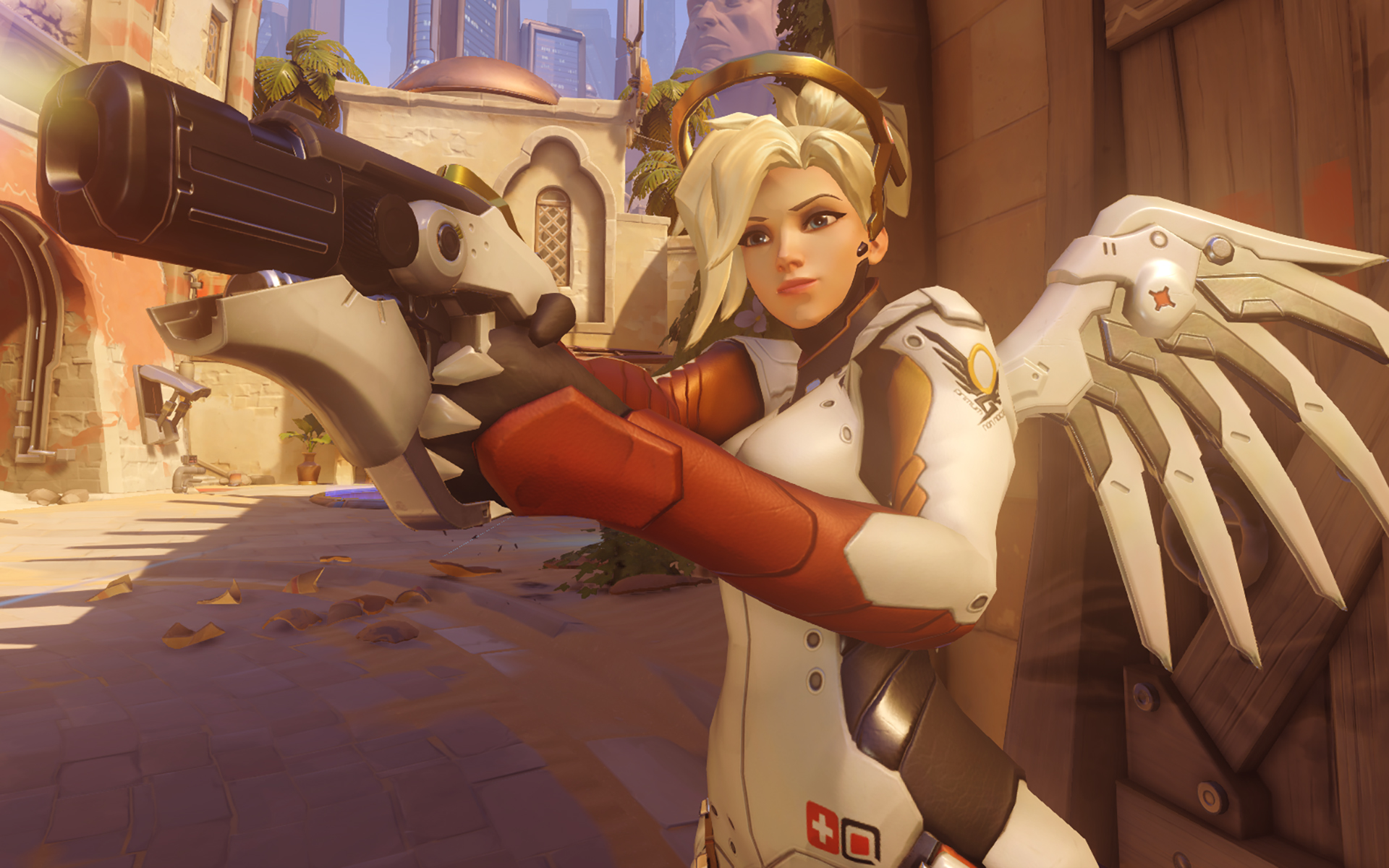Jeff Kaplan's Blizzard career in his own words
Kaplan on how he was hired, his work on WoW, the years he spent on cancelled MMO Titan, and the birth of Overwatch.

This article was originally published in the May 2017 issue of Edge magazine. We have republished it in 2021 to add context to the news of Kaplan's departure from Blizzard.
During the early 2000s, Jeff Kaplan spent a full third of his life in EverQuest. He played the game at the highest level as an officer in one of North America’s most prominent guilds, Legacy Of Steel. When not in Norrath he pitched novels and short stories to publishers and tinkered with the Half-Life map editor WorldCraft.
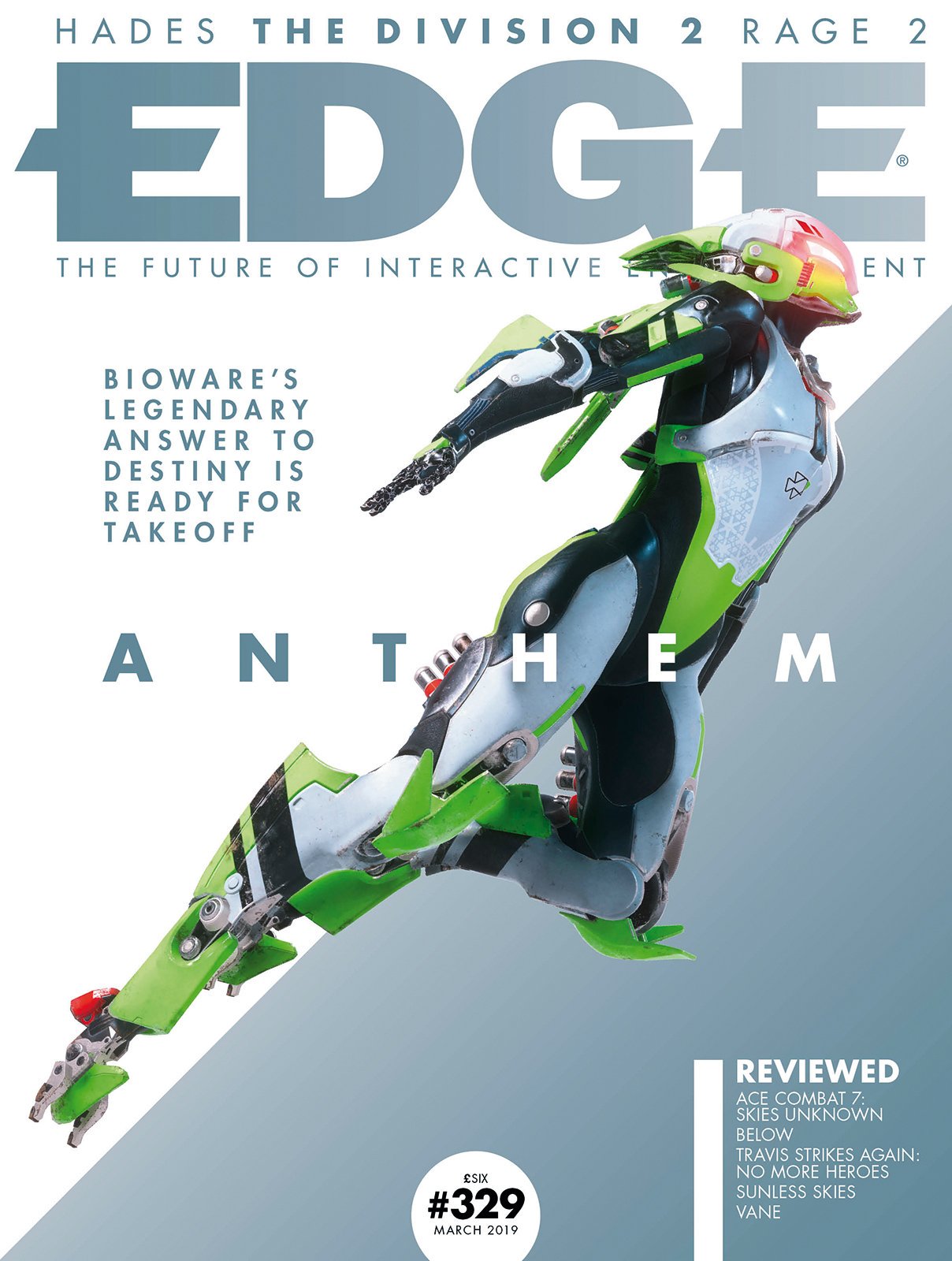
The authority on videogame art, design and play, Edge is the must-have companion for game industry professionals, aspiring game-makers and super-committed hobbyists. You can subscribe to both the print or digital editions here.
One day, in EverQuest, a fellow officer asked if he could try Kaplan's maps. Later, the same guildmate invited him to lunch in Irvine, California, at a game development studio called Blizzard, which Kaplan had never heard of—he didn’t play strategy games. The guildmate was the Blizzard designer Rob Pardo; studio co-founder Alan Adham was also a member. A series of lunches over six months eventually revealed themselves to be job interviews. This RTS studio had an idea for making an MMOG, but it needed an MMOG player's expertise to make it happen.
Kaplan's subsequent career at Blizzard has seen him become design lead on World Of Warcraft, the world’s most successful massively multiplayer RPG. He oversaw design on the aborted MMOG Titan before, in the aftermath of that project's collapse, spearheading work on the phenomenal—and phenomenally popular—Overwatch.
Here's the story of Kaplan's Blizzard career, in his words:
World of Warcraft
Developer/publisher: Blizzard
Format: PC
Release: 2004
I joined in May of 2002, which is the period when they were wrapping up Warcraft 3 and then starting on the E3 build of World Of Warcraft. It was a big deal. WoW was going to be at E3 and needed a good showing.
Keep up to date with the most important stories and the best deals, as picked by the PC Gamer team.
They hired me along with another designer who was going to be on quests named Pat Nagle. Pat and I started from scratch with how a quest should work. We started out more from a creative place: what are the sorts of quests that we want to do in a game, what are those stories, how can we have that type of gameplay? We worked with the programmers to get the tools made so we could create content and then we split up—he started with Elwynn and I started with Westfall. We said, "OK, here we go, you take this zone, I'll take that zone, we'll see where we're at."
Elwynn was our first team-wide playtest. We were kind of shocked, because coming from EverQuest, ironically you barely did any quests in that game. Our assumption was that we’d give you a quest, you’d go do the quest, and you'd discover a new area of spawns—like, "Here's where Hogger is, and oh look there’s all these gnolls here, I think I'll kill gnolls for a couple of hours."
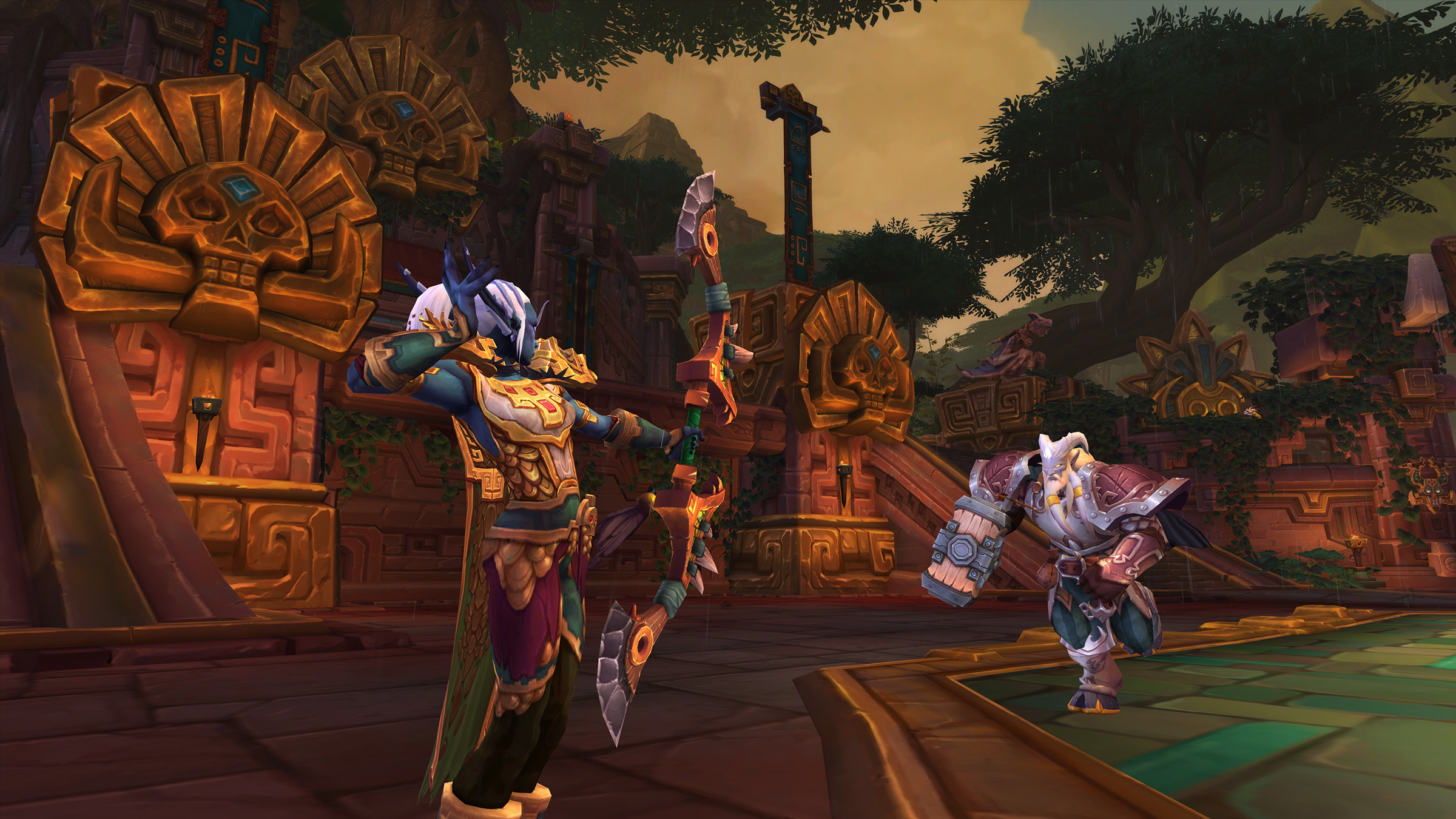
We put the team through the playtest and first thing after that everybody is up in arms. "I ran out of quests! Did something break?" Alan, Pat and I had this realisation: "Oh fuck, we're going to have to quest this whole thing out." We literally had to rethink the project at that moment. Our old estimates for how many quests we thought we were going to do versus how many quests we ended up doing were radically off.
In that moment I looked at him and thought, "Wow, he's batshit crazy."
When I think about the effect that WoW had on MMOs... I almost think it's broader than that. One, MMOs can be for everyone. MMOs are not just for crazy-hardcore people who are willing to spend one third of their life on this activity. The other, and I guess this goes hand in hand, is that it's not OK for a game to totally lack direction for players who seek it. A lot of players just need something, some sort of direction, or they're going to check out from the game.
In terms of WoW being a success, this is going to sound super weird 11 or 12 years after it all happened, but we had huge insecurity about the game. Every interview we'd do, the question we kept getting asked was—it wasn't phrased quite this way, but: "What business do you have making an MMO? You guys make RTSes."
Back in that time period the two games that MMO players were most excited about were EverQuest II and Star Wars Galaxies. Everyone believed [Galaxies] was going to rule the universe because it was the two things that I know I was most excited about in life, which was Star Wars and MMOs. I remember the year that we showed World Of Warcraft at E3, we were fully playable—you could run around, go to Scarlet Monastery, do all that stuff—and for Star Wars Galaxies they had literally only shown a movie and the movie was winning Best Of E3 awards. Our morale was super low. I think the only one who had confidence was Alan.
It was around that time period that EverQuest announced that they had passed 400,000 subscribers. I was thinking we'd be lucky if we got half that, a quarter of that, and Alan Adham stood up and said, "We're going to have one million subscribers, that's how good I think this game is going to be, that's how much I believe in you guys."
I remember looking at Alan. I held him in the highest admiration because he was my first boss, he was one of my mentors, he had hired me, he had founded Blizzard. In that moment I looked at him and thought, "Wow, he's batshit crazy."
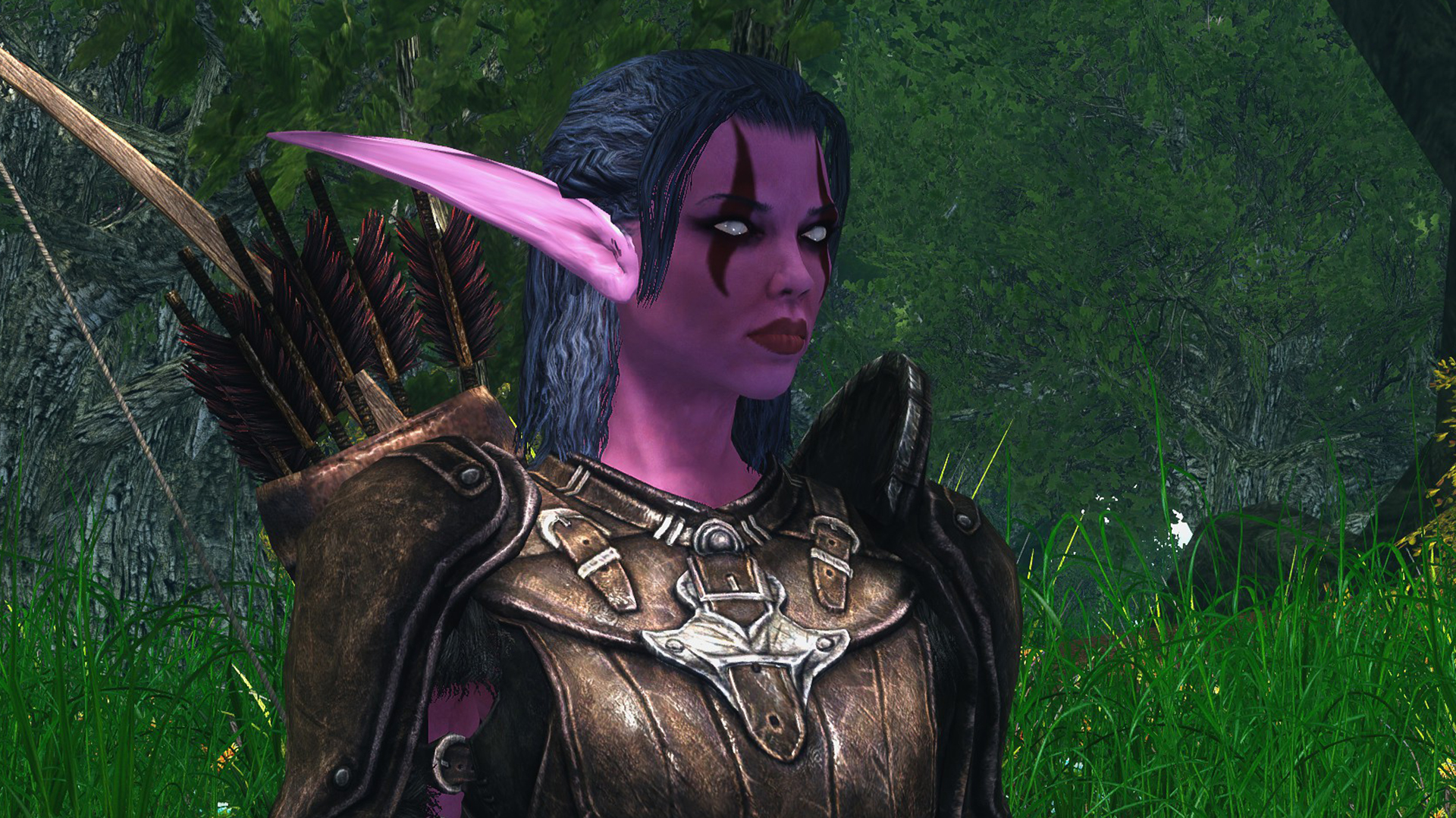
World of Warcraft: The Burning Crusade
Developer/publisher: Blizzard
Format: PC
Release: 2007
I'm not sure how many people know this, but we shipped World Of Warcraft with 60 developers. Sixty people made that game. It's something that to this day I’m very proud of, [but] after we launched, because it was such a difficult crunch and such a difficult development cycle, we lost about 20 developers.
We were pulling boxes from the retail channel so you couldn't even buy WoW.
We had all of WoW's success to support from a live standpoint, and we had no animators. All of our animators had quit. There's this one patch where we introduced four green dragons. It was literally because we had a dragon model and getting colour shift on it was trivial and we had no one to work on the game at that point. The team was devastated and demoralised. We were pulling boxes from the retail channel so you couldn't even buy WoW. You launch this game and then you're like, "Pull the boxes back! We can't support them on the servers!"
We had hired some new people. I remember we hired this one server programmer whose name was Brian Gibson-Winge. We're having a team meeting and I remember everyone talking, like, "What are we doing? Nothing we're doing is good." Brian was the brand-new guy in the room, and he stands up and says, "Hey guys, I know I'm the new guy and I probably shouldn't speak up, but what’s wrong with you? You made World Of Warcraft and this is the most awesome fucking game in the world." Suddenly, as we started hiring more people like Brian, the team got reinvigorated. There was a huge turning point going from vanilla WoW into The Burning Crusade, and it was because of the influx of new people who really inspired the team. That and the first BlizzCon were a big morale boost for us.
World of Warcraft: Wrath of the Lich King
Developer/publisher: Blizzard
Format: PC
Release: 2008
The team since Wrath Of The Lich King has done amazing things—I think the best expansion they have ever made is Legion. But at that time, there was something very special about Lich King. When we reflected on The Burning Crusade we realised that we had a story that was probably a little bit too convoluted for most people to understand. There's probably five factions of Blood Elves. As lead designer on the game I didn’t even know which Blood Elves were which at a certain point.
The other thing that was really amiss in Burning Crusade was that we had one of the most compelling characters in Illidan, but we only let players interact with Illidan in the Black Temple. Such a small percentage of our players got to do that content because it was tuned to be so hardcore, and it was so inaccessible. The massive lesson coming from The Burning Crusade into Wrath Of The Lich King was, if you have this front-of-the-box compelling character like Illidan or Arthas, give it to people! Let people interact with it. It's no mistake that the first second that you log into Wrath Of The Lich King, especially if you make a Death Knight, who's standing in front of you? It's Arthas.
Also, we had Alex Afrasiabi, who was probably the most famous EverQuest player of all time. We hired him during vanilla WoW, but I feel like Alex's curve was really starting to peak with Wrath Of The Lich King. We put Alex in charge of all quest design for that expansion. Alex was the one who made that Death Knight starting experience, which I think at the time and maybe to this day is one of the greatest storytelling quest experiences in the game. It made everybody question what we had done before.
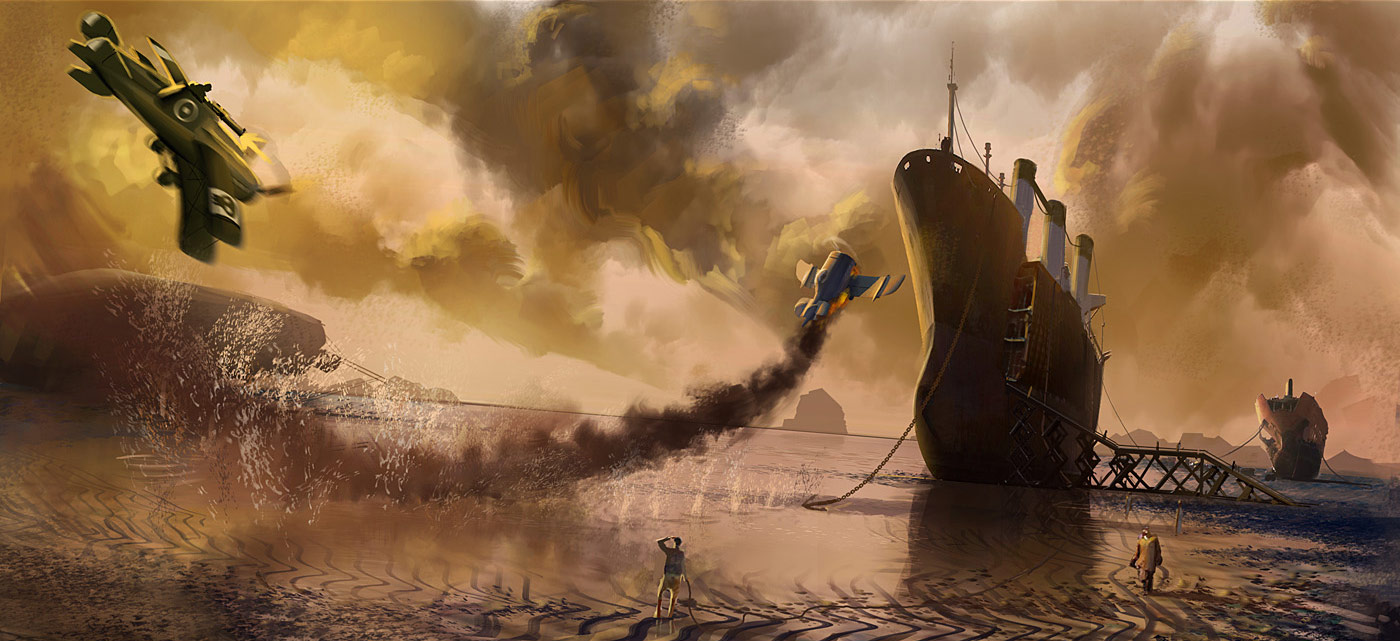
Titan
Developer/publisher: Blizzard
Format: Unannounced
Release: Cancelled
I moved over from WoW to Titan the week Wrath Of The Lich King shipped. It was November of 2008. I remember it well because we have this tradition at Blizzard when we ship a game: we do a champagne toast out in front of the orc statue that's at the studio. The Wrath Of The Lich King champagne toast was memorable for three reasons. One was because it was Wrath Of The Lich King, and we were very proud of it. Two, it was my birthday. Three, it was the day that Barack Obama was elected for his first term. I remember being quite drunk when I found out that Obama had won the election. I was like, "Wow, that's awesome!" Then I passed out a few hours later. Very shortly after that, like the next day, I moved over to what is now called Team 4 to work on Titan.
Matt looks at me, and I look at Ray, and I say, "Well, we need to shut it down."
Things started off great. There was an enthusiasm and an ambition to the project that made it very alluring for a lot of us. For the first year that I was on the project, from 2009, it was just a lot of brainstorming, a lot of excited false starts were happening, a lot of technology exploration. It was somewhere at the end of 2009 that the red flags started going off for me. "This doesn't feel like we're making the right type of project." That just increased as the years went on.
The week before Diablo 3 shipped they moved Ray [Gresko, production director] onto Titan to help save the project, so he didn't even get to enjoy the launch with his team. We were pulled into this meeting and told, "Hey, you're production director, you're game director; you guys need to try and save this project." Ray said we should get lunch and we took the lead producer Matt Hawley with us. Ray sits down across from Matt and I and says, "Tell me what I need to know about Titan." Matt looks at me, and I look at Ray, and I say, "Well, we need to shut it down."
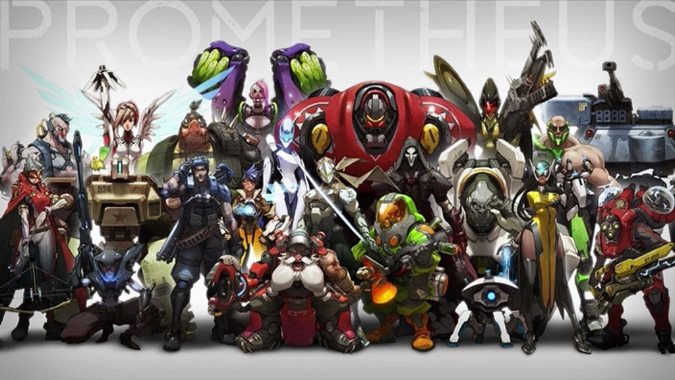
Blizzard has cancelled more games than we've made.
Ray was taken aback. He said, "Well, they brought me on this project to save it. You have to respect the fact that I can't just shut it down." Six months passed and during that six months we replaced some of the leadership on the team. We now had a new tech director, a guy called Mike Elliott, because the technology on Titan was just a mess, nothing worked, and we brought Mike over to help. Ray, Mike and I were in a one-on-one with the three of us; I don’t know how it's a one-on-one with three people, but that's what we call them. We were in this meeting and Ray had his moment where he said, "Oh god, you and Matt were right, we need to shut it down, it's just not going to happen." And Mike says: "Wait! I was just brought onto the project to save it! We can’t shut it down!" So we went another six months and then it was after another one of those one-on-ones where we said, "It's time to go to studio leadership and tell them that it's not going to happen."
I don't think most people realise this, but Blizzard has cancelled more games than we've made. When you're making a new game at Blizzard it's more likely that your game's going to get cancelled than it's going to see the light of day. Now I don't think that any developer working on a game believes that you're the one—I think we all think that we're special.
Something that was unique about Titan was that it's not usually the team that says, "This is not going to happen." It's a very daunting thing to do. You’re basically saying, "We failed to do our jobs." You don't know what's going to happen. You don't know if they're going to say, "Thanks for your time here, be on your way." That, and most projects go on for that length of time—ultimately, I did six years [on the Titan project].
We were in this weird mourning period, but we suddenly had to be the most creative [we'd ever been] in our lives.
We knew in about April of 2013 that we were going to shut the project down, but very few people knew. Only the top leadership of Activision knew: Bobby [Kotick] knew, Mike Morhaime, Frank Pearce, myself, Ray Gresko, Rob Pardo, Mike Elliott. The rest of the team didn't know. We were trying to work on a contingency plan because we had a 140-person team. We wanted to be careful in that moment that we didn't devastate a lot of people, make people feel that they'd wasted their careers.
The initial plan was that we would come up with a new game concept, and then we would inform the team at the end of May that we were shutting Titan down—however, there was this new game that we were going to make instead. That plan, as I say it now, sounds so naïve. I have to pretend that we're still making Titan during the day, and at night and on the weekends I'm going home and I'm putting these pitch decks together for different game concepts. I'm absolutely fucking panicked.
Instead we came up with a plan to inform the team that we were shutting the project down. Luckily the studio was in dire need of help on our other projects, so it was the perfect time to have a lot of developers free up. Of the 60 remaining developers, the vast majority were engineers and programmers. We had built a new engine for Titan, but the engine was a mess, and we said, "Do whatever we have to do so this work isn't totally wasted." Then a very small group of us, about ten, were given the assignment over a six-week period to come up with game pitches. If we came up with something compelling, the team would go on to make that. If we didn't, the remainder of us would be redistributed to the other projects. We were in this weird mourning period, but we suddenly had to be the most creative [we'd ever been] in our lives.
Overwatch
Developer/publisher: Blizzard
Format: PC, PS4, Xbox One
Release: 2016
At first we really thought that we were the MMO team. The first idea we worked on was an MMO that was not in the Warcraft universe, but was in one of the other Blizzard universes—[you have] tonnes of questions about what that might be, I imagine. The second idea we worked on was another MMO concept that was not in an existing universe, and not in the Titan universe—it was a brand-new MMO concept. It was hard because we were really scoping everything back. Whereas Titan had been the most ambitious MMO I've ever seen, we were doing these other MMO pitches with one hand tied behind our back, knowing the time period we were given was not realistic to make an MMO. A lot of us had MMO experience, knew exactly what it took, and we knew, like, there's no way this was going to happen.
We were having a class discussion—it was going to be a class-based MMO—and our class designer, a guy called Geoff Goodman, said, “I wish instead of having six classes or nine classes, we could have dozens of classes. But what if our classes had fewer things that they did and were more specialised?” It really just lit the lightbulb for me. I went back to my desk after that and I was really inspired by what Geoff had wanted to do, but I was actually thinking to myself, "I don’t think that’s an MMO."
...You could sense this undercurrent of, "Oh god, of all things, what are you idiots doing?"
I was fascinated with the shooter concept. The thing that worked the most on Titan, because Titan had shooting as its combat model, was its PvP shooting. The two things I loved most in gaming were MMOs and shooters. I started thinking about a more tightly scoped game using that Geoff Goodman concept of dozens of classes with abilities.
I started pulling a bunch of Arnold Tsang concept art of characters for Titan. We had this class called the Jumper in Titan that had Blink, and Recall, and Pulse Bomb, and about 30 other abilities, but I always felt like Blink, Recall and Pulse Bomb—and the Pulse Pistols—were the coolest part. Suddenly it was like, "Well, what if the Jumper uses this art and has only these abilities, and what if it’s a person—instead of this nameless, faceless class, these are actual characters?" Had that pitch deck and the rest of the team was working on MMO number two, and Ray Gresko came by and looks over my shoulder. I show it to Ray and he’s instantly like, “Oh my god, that’s what we should do.”
So we took the deck and we grabbed [Chris] Metzen and he lit up right away. Especially when he started to think about how it's not a generic sniper, it's Widowmaker, who was turned against her husband in this cold-blooded assassination attempt. That was so much more compelling to him than these generic classes. He had the same reaction Ray had, and Matt Hawley our producer was overhearing our conversation and said to me, "You need to pitch this to the team tomorrow morning."
Matt's the one who forced the game to get named Overwatch. We were taking the deck to the team, and the deck had a very not-good name for a shooter. Matt's like, "There's nothing less inspiring than what you have that deck named right now. You have to come up with a name for it." And I said, "I want to call it Overwatch." Overwatch was always a world group in Titan, but it was totally different—but all of us loved the name. So there was a moment of rebirth that we could actually call this new game Overwatch, and we pitched to the team and almost unanimously they said, "Yes, we want to make this game."
Being an individual developer on Team 4, it was like a whole new era when we started Overwatch. That was very good. The problem was that we needed to get the game concept approved by Blizzard and by Activision. The year was 2013 and we had just failed enormously at creating Blizzard's next MMO. It was supposed to be this MMO shooter. Then we come back and we’re sitting in the boardroom with the top Activision executives—Thomas Tippl, Dennis Durkin, Bobby Kotick—and what do we pitch to them, the guys who have enormous success with the Call Of Duty series? We walk into the pitch meeting with a shooter. They were super polite and super nice to us, but you could sense this undercurrent of, "Oh god, of all things, what are you idiots doing?"
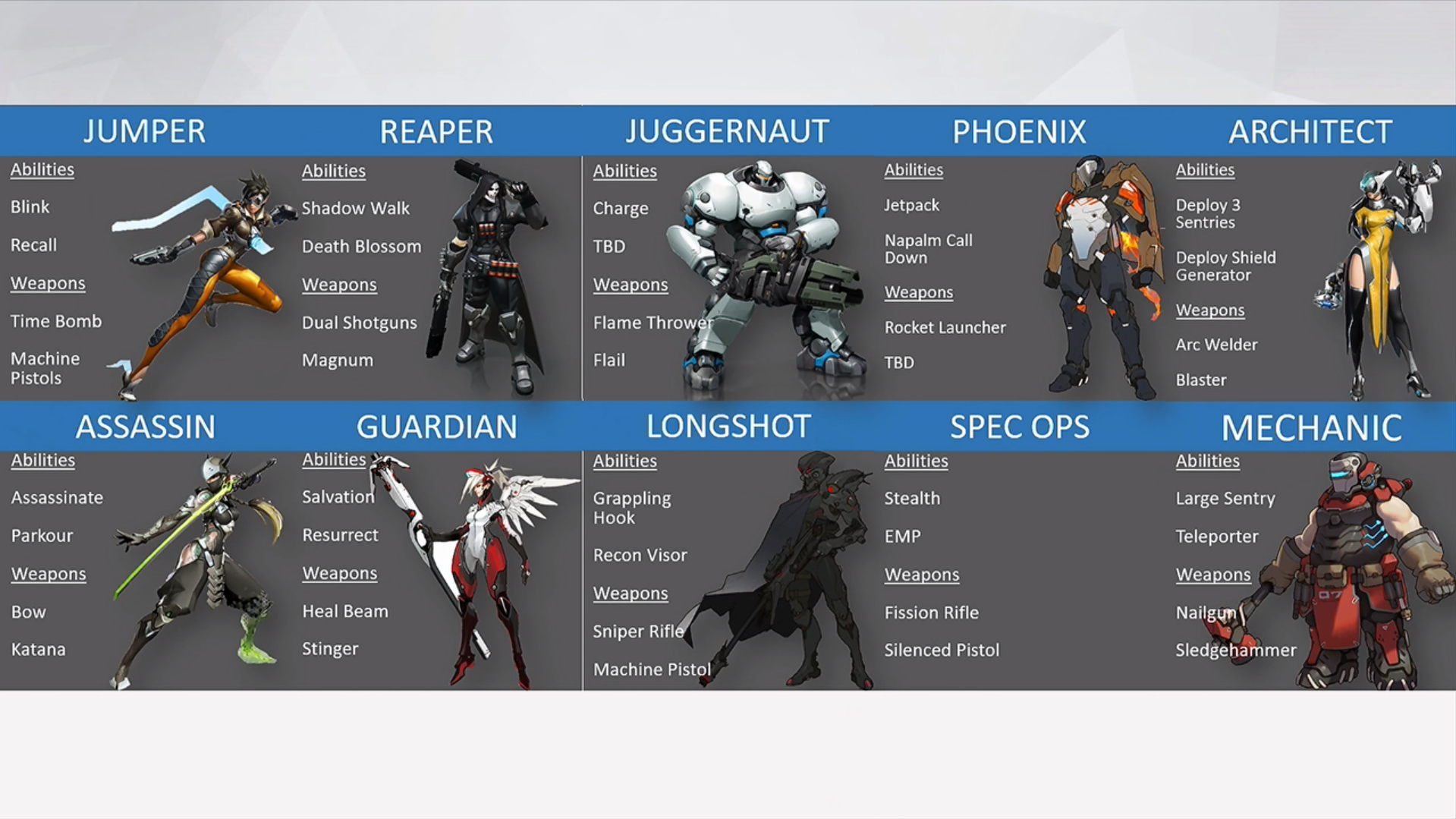
The saving grace was a picture that Arnold Tsang had drawn—an early version of the character lineup. We're pitching and there's a lot of hard questions coming at us and Bobby [Kotick] just stops the meeting and says, "Go back two slides." I'm thinking, "Oh, fuck, what was two slides ago?" We go back and it's that Arnold Tsang picture. The room just got quiet and you could see the wheels turning in Bobby's head. He just said, "I've never seen art like this, I've never seen characters like this." It was the only positive thing that was said in the Overwatch pitch meeting—how Bobby emotionally reacted to the art. What that bought us was that we had until March to put together a core combat demo of the game.
The demo we made was Temple Of Anubis, fully artified and lit in our engine, which now actually worked, and we had Reaper, Widowmaker, Pharah and Tracer. And it was just the funnest thing we had ever played. The Blizzard guys loved it, the Activision guys came and because they're shooter fans, they were screaming and yelling with joy. It was just the most positive, off-to-the-races moment ever.
The next step after that demo was Blizzcon 2014, which was intended to be our announce. Ray [Gresko] was the inspirational leader on the team who believed in us more than anything, and he said to us, "I want us to become one of those Blizzard stories one day"; the team that gets cancelled one year and announces a project at BlizzCon the following year. Ray had such an amazing plan to get us to that BlizzCon.
We knew we were going to face a couple of issues. One was that we had to publicly cancel Titan. Then I started focusing on how we could announce the game, what content we should have that would make people believe in the game and not be disappointed by the concept.
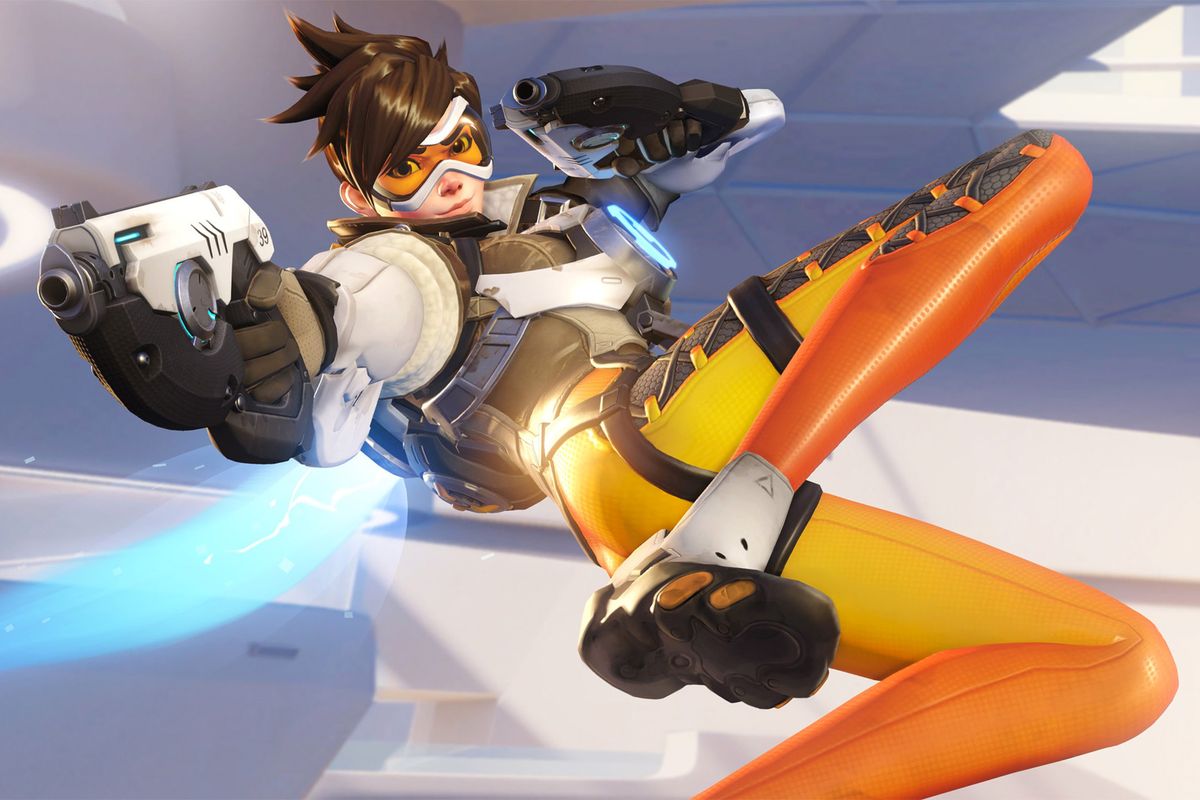
What I was worried about was a couple of things. One, we weren't making an MMO. Two, Blizzard was making a shooter and we weren't a shooter company. Three, I thought people would think we were overly derivative of either various MOBA games, or games like Team Fortress 2.
Every time we tried to pitch the game to somebody they were skeptical, but every time they played the core combat demo they were like, "Oh my god, this is awesome." So I put together this content plan that was to have three maps, because I wanted to show that the game actually existed and wasn't just this smoke-and-mirrors E3 demo. The big push was for 12 heroes. The reason for that number was that I wanted to very cleanly clear the nine classes from Team Fortress.
Nothing to me was more rewarding than that moment at BlizzCon 2014 when Chris announced the game...
I felt that if we had nine or fewer classes during our announce, players would naturally map every one of our heroes to a Team Fortress 2 class. Which is funny because when the announce actually happened, the fans who read about it online immediately jumped to that conclusion. What was awesome is that the fans that attended the show played so much of Overwatch there that they became our strongest advocates. "Guys, I know there's obvious inspiration from games like Team Fortress but they're doing something different. This is a very different experience."
Nothing to me was more rewarding than that moment at BlizzCon 2014 when Chris announced the game and then it was just there on the show floor and everyone was playing it. I forgot how important that was, not only to me personally but to everybody on my team as well. "This is the reason we do this, because of those guys out there playing the game right now."
The team today is in an awesome place. I think we had a little bit of a rocky start to becoming a live-service team, but the team has really hit its stride now. They feed off the live game, they feed off the community, and they really are ready for some of the next big challenges that we want to do. They're always inspired by not what's going on now, but thinking about what Overwatch could be someday: where we could take it.
This article was originally published in the May 2017 issue of Edge magazine. In 2019, Overwatch 2 was announced. In April 2021, Kaplan left Blizzard.
Joining in 2011, Chris made his start with PC Gamer turning beautiful trees into magazines, first as a writer and later as deputy editor. Once PCG's reluctant MMO champion , his discovery of Dota 2 in 2012 led him to much darker, stranger places. In 2015, Chris became the editor of PC Gamer Pro, overseeing our online coverage of competitive gaming and esports. He left in 2017, and can be now found making games and recording the Crate & Crowbar podcast.
